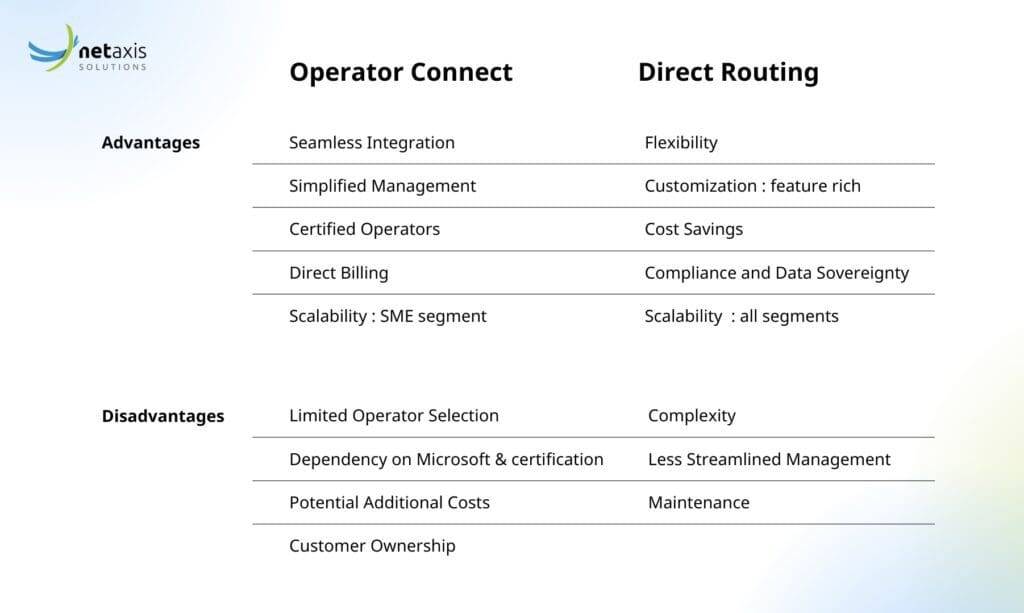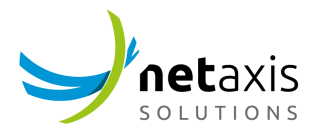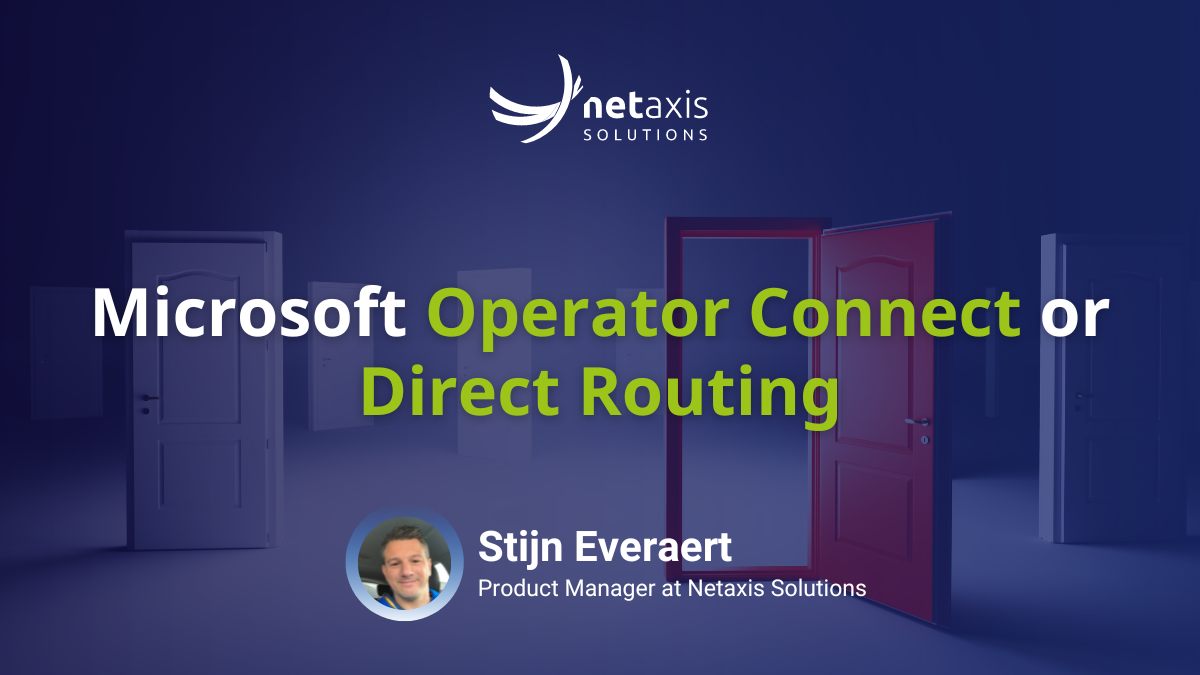Table of Contents
Companies are increasingly using Unified Communications to support their customers. Combining voice services with UC solutions allows a company to improve their levels of support and by using account credentials and numbering that is specific to a function rather than an individual provides a level of continuity of service when staff move on.
The market of connecting a voice service with Microsoft Teams and other UC solutions is growing rapidly and Service providers need to consider their choice of delivery model.
The 2 questions that often arise in discussions with operators and service providers when looking at UC Microsoft Teams integration are:
- Which is the preferred model?
- How should it be implemented?
Microsoft Direct Routing versus Microsoft Operator Connect:
The choice of approach depends on the intended strategy and here it is worth comparing the two approaches.
Microsoft Operator Connect
Operator Connect is a service provided by Microsoft that allows organisations to connect their existing telephony services with Microsoft Teams. It simplifies the process by integrating certified operators directly into the Teams Admin Center, making it easy to provision and manage phone numbers.
Advantages of Operator Connect:
- Seamless Integration: Operator Connect simplifies the integration of telephony providers with Microsoft Teams, ensuring a consistent user experience.
- Simplified Management: Phone numbers and calling plans are managed directly within the Teams Admin Center, streamlining provisioning and management.
- Certified Operators: Microsoft works with a select group of certified operators, ensuring high quality and compatibility with the Teams platform.
- Direct Billing: Operator Connect allows for direct billing by the telephony provider, simplifying the invoicing process.
- Scalability: The service is designed to scale with the organisation’s needs especially towards small to medium-sized businesses.
Disadvantages of Operator Connect:
- Limited Operator Selection: Operator Connect only works with certified operators, which may limit the choice of providers for businesses. A certification process is required.
- Dependency on Microsoft: Operator Connect is fully dependent on Microsoft’s infrastructure, which may cause concerns for organisations with specific compliance or data sovereignty requirements.
- Potential Additional Costs: While Operator Connect simplifies the integration process, it may come with additional costs from the telephony provider.
- Combining the 2 worlds (allocating numbers etc) can be cumbersome. Solutions like Netaxis Fusion automates this process.
Microsoft Teams Direct Routing
Direct Routing is a solution that enables organisations to use their existing telephony infrastructure, such as Session Border Controllers (SBCs), to route calls to and from Microsoft Teams. Teams Direct Routing offers more flexibility and customization than Operator Connect but requires more configuration and management.
Advantages of Teams Direct Routing:
- Flexibility: Direct Routing allows organisations to leverage their existing telephony infrastructure and choose their preferred telephony provider. Customer ownership remains with the Operator.
- Customization: Direct Routing offers more customization options, such as configuring call routing, number translation, and integration with third-party applications.
- Cost Savings: Organisations can potentially save on telephony costs by using their existing infrastructure and negotiating rates with their preferred provider.
- Compliance and Data Sovereignty: Direct Routing allows organisations to maintain control over their telephony infrastructure, addressing compliance and data sovereignty concerns.
- Scalability: The service is designed to scale with the organisation’s needs in all segments (including large enterprises with complex requirements).
Disadvantages of Teams Direct Routing:
- Complexity: It requires more administration and installation by default than Operator Connect as it is managed through PowerShell . This can be challenging for organisations without in-house expertise.
- Less Streamlined Management: Managing Direct Routing involves working with multiple interfaces, such as the Teams Admin Center, SBCs, and telephony provider portals.
- Maintenance: Organisations are responsible for maintaining their SBCs and ensuring compatibility with Microsoft Teams.
Implementation strategies
Several implementation models exist for both Operator Connect and Teams Direct Routing:
- Manual Provisioning
- Build a point solution
- Partner with a company specialised in these types of initiatives.
Do not hesitate to reach out with Netaxis Experts. Netaxis has over the last decade worked with customers on implementations of both Operator Connect and Teams Direct Routing multiple times. Netaxis’ experience allows Operators to choose the model best suited for their strategy while eliminating the disadvantages through its Fusion platform.
Summary






